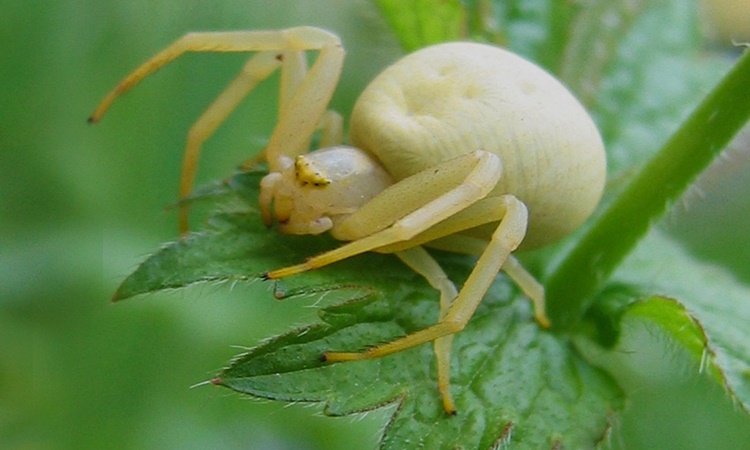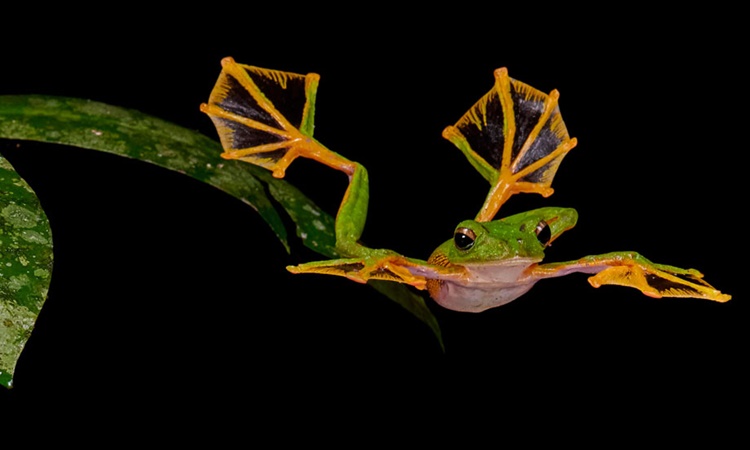Here Are 7 Flying Creatures That Are Not Birds
FLYING CREATURES – In this article, you will know the seven (7) flying creatures that are not birds.
Could it be a bird? Perhaps a plane? No, it’s neither – it happens to be a flying tree snake! Indeed, numerous remarkable creatures showcase impressive flying skills without the conventional wings one might anticipate. From flying fish to squirrels soaring through the air, a diverse array of exceptional animals across the globe traverse the skies utilizing specialized fins, substantial toes, or added membranes.
Flying Fish

Consider the Flying Fish as an example. Despite the apparent paradox of a fish taking flight, there are more than 40 species of flying fish worldwide. Primarily found in warmer areas within the Atlantic, Pacific, and Indian Oceans, these ray-finned creatures thrive in open waters. Utilizing their sizable and sturdy fins, they propel themselves out of the water, extending their fins sideways akin to wings, allowing them to glide remarkable distances, reaching up to 650 feet. Scientists propose that this airborne capability developed as a strategy for flying fish to escape underwater predators that lack comparable aerodynamic skills.
Paradise Tree Snake

Another intriguing instance is the Paradise Tree Snake, which inhabits Southeast Asia. Referred to as the paradise flying snake, this slender and nimble reptile excels at climbing, with a preference for coconut palm trees as its habitat. When seeking to traverse between treetops, the snake can compress its ribcage to adopt a concave shape. In this modified state, it launches itself from a tree and gracefully glides through the air, exhibiting an S-shaped slither reminiscent of its ground movement.
Mobula Ray

Often called flying rays due to their capability to leap out of the water, Mobula rays are a type of fish closely related to sharks. Possessing a diamond-shaped body, the fins of Mobula rays are effective both underwater and in the air. Attaining significant speed, these rays can launch themselves up to six feet into the air, flapping their fins in a wing-like manner before gracefully returning to the water. Frequently observed in groups, a gathering of Mobula rays creates a captivating spectacle. The precise reason for this aerial behavior in flying rays remains uncertain, although it is speculated to potentially function as a means of communication among members of the species.
Flying Squirrel

Though flying squirrels don’t experience true flight like birds, their aerial motions can give the impression of it. The extra membrane that links their front and hind legs serves as a parachute for these unique terrestrial mammals. When a flying squirrel leaps into the air, this specialized membrane allows them to glide from one tree to another, skillfully avoiding any predators on the ground. Flying squirrels can not only traverse distances of up to 150 feet in the air but also showcase the capacity to modify both their speed and direction during flight, using their legs for steering and their tails for braking.
Crab Spider

Apart from their inherent unsettling nature, many spiders have a remarkable skill – the ability to go airborne. This is achieved through a prevalent arachnid method called ballooning, wherein a spider releases silk and uses the wind like a kite. This allows spiders to travel significant distances for reasons such as joining a new colony, searching for food, or locating potential mates. Crab spiders, in particular, have been extensively studied regarding this capability. A research conducted at the Technical University of Berlin emphasized crab spiders as “cautious and intentional fliers,” using the hairs on their legs to evaluate wind conditions before initiating flight.
Bats

In addition to their inherently unnerving characteristics, numerous spiders possess a fascinating talent – the capacity to become airborne. This is accomplished through a common arachnid strategy known as ballooning, where a spider releases silk and utilizes the wind akin to a kite. This enables spiders to cover considerable distances, whether for the purpose of joining a new colony, searching for food, or seeking potential mates. Crab spiders, in particular, have undergone extensive examination regarding this ability. A study conducted at the Technical University of Berlin highlighted crab spiders as “deliberate and cautious fliers,” utilizing the hairs on their legs to assess wind conditions before initiating flight.
Wallace’s Flying Frog

Referred to as parachute frogs, Wallace’s flying frogs are residents of tropical rainforests in Malaysia and Borneo. Named in honor of the 19th-century naturalist Alfred Russel Wallace, these frogs exhibit unique characteristics, including sizable webbed feet, prominent eyes, and a large mouth. In escaping from predators, these flying frogs are capable of gliding up to 50 feet in the air, employing additional membranes as a parachute. As they move from one tree to another, the frog’s extensive toe pads act as an adhesive cushion, ensuring smooth landings.
READ ALSO: 7 Intriguing Facts About Sharks
